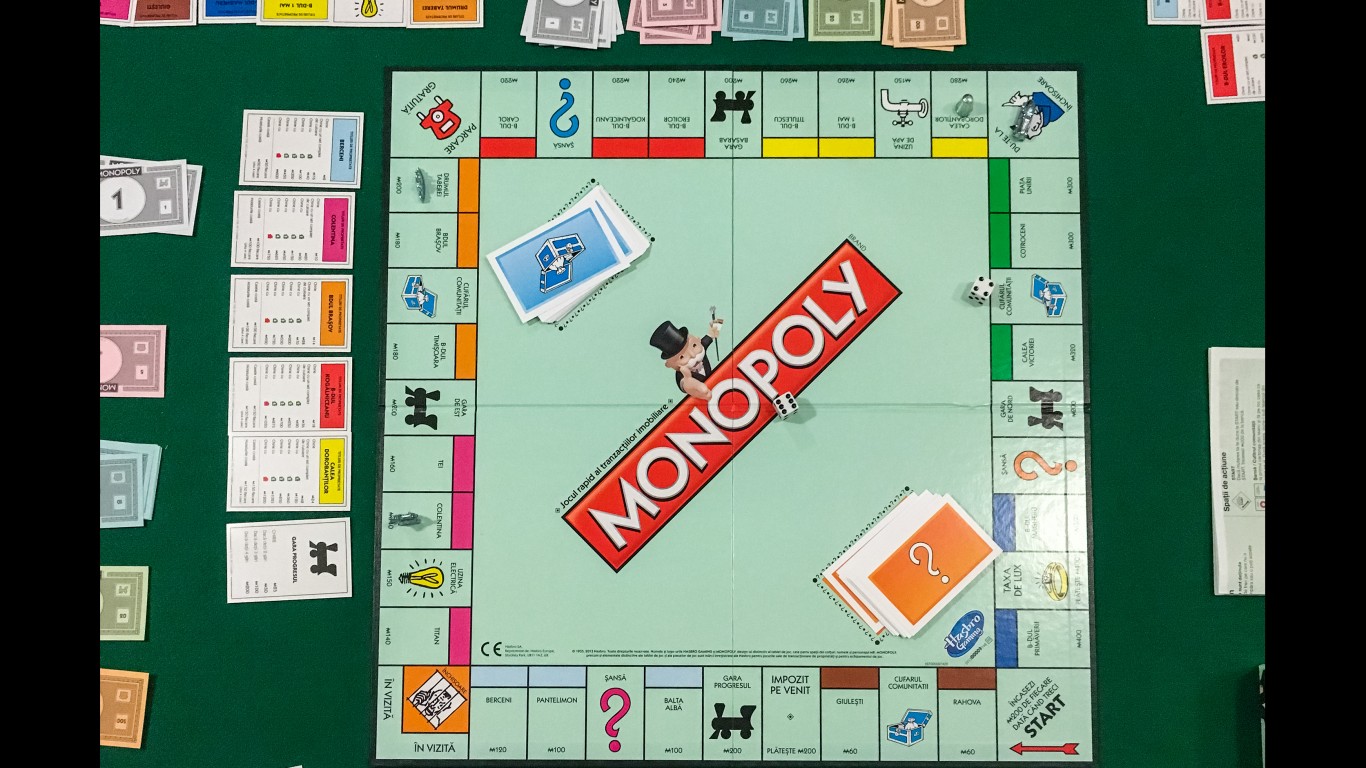
On May 5, 1809, Mary Kies became the first woman to receive a patent in the United States. (It was for her technique of weaving straw with silk.) Of course, women inventors existed before this time, but the property laws in many states made it illegal for women to own property on their own. This led some women to apply for patents in their husbands’ names if they decided to apply at all.
Only about 10% of U.S. patent holders are women, although women account for half of doctoral degrees in science and engineering. This disparity is due in part to the the U.S. Patent and Trademark Office being more likely to reject patents with women as sole applicants. Further, when patents sought by women are approved, they are more likely to have added parameters that made the description of the patents far more detailed. These revisions tend to lower the scope of the patent, making it weaker and less valuable.
It’s no secret that women face more scrutiny in STEM fields, which is why the women on this list have more to be congratulated on than their inventions. They are pioneers in their fields and have often overcome tougher hurdles based on their sex than their male counterparts.
To compile a list of 50 things people never knew were invented by women, 24/7 Tempo reviewed over a dozen news reports and historical articles on inventions, both by men and women, that changed history. These are the most influential women in science.
Click here to read about 50 inventions you never knew were invented by women.
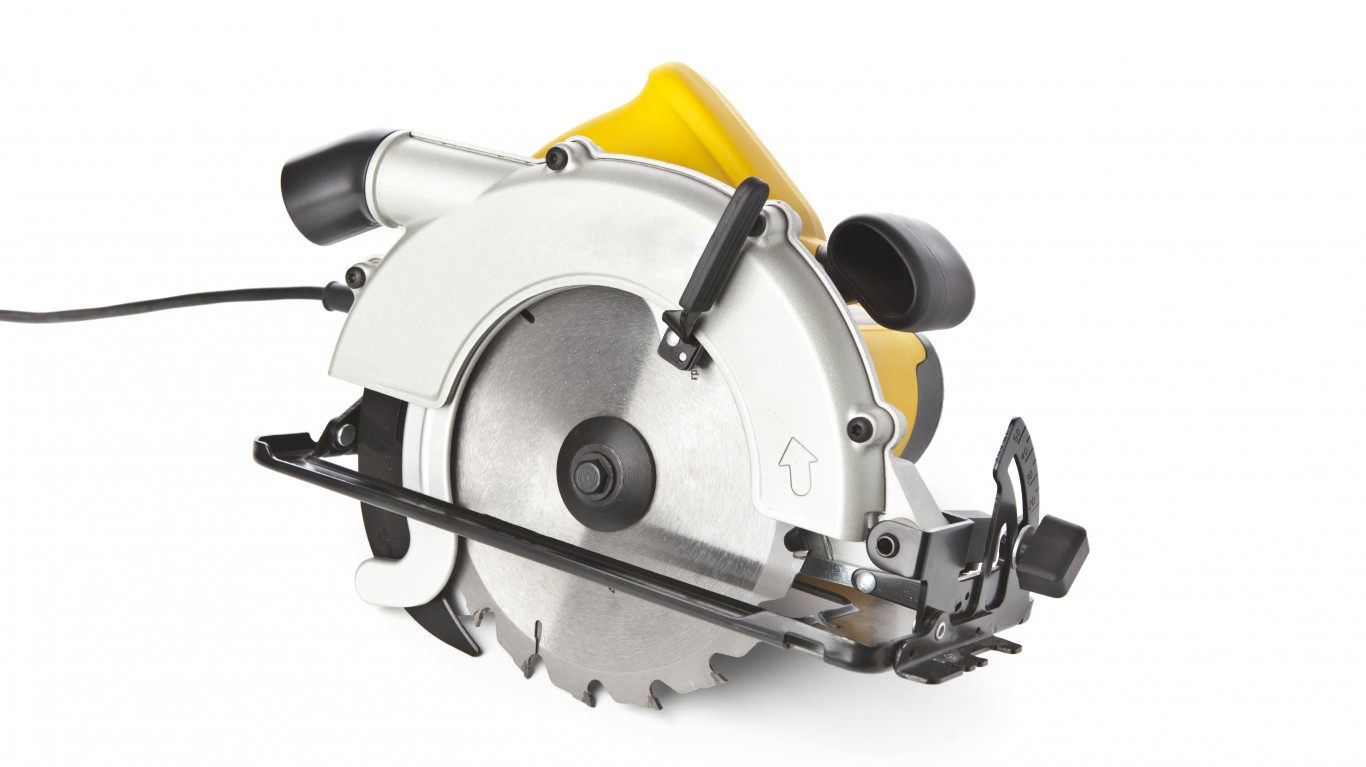
1. Circular saw
> Inventor: Tabitha Babbitt
> Year / period: 1812
While living in a Shaker community and working as a weaver, Babbitt watched people struggling to cut wood with a pit saw, which required two users and only cut in one direction. Determined to help, she attached a circular blade to her spinning wheel and invented the much more efficient circular saw.
[in-text-ad]

2. Aquarium
> Inventor: Jeanne Villepreux-Power
> Year / period: 1832
A French naturalist, Villepreux-Power was trying to prove that the paper nautilus does not take discarded shells from other organisms, but rather grows its own shell. To observe the creature for an extended period of time and to study marine life, she invented a glass aquarium.
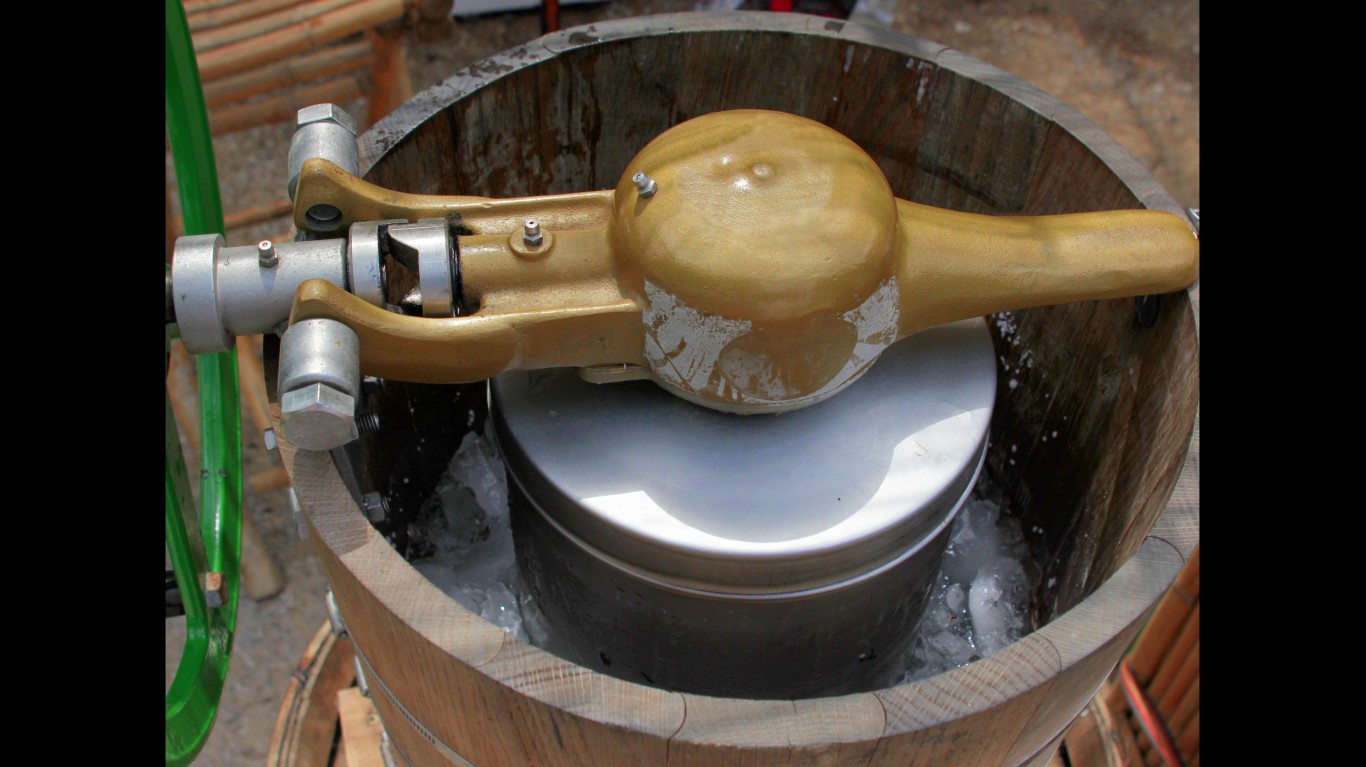
3. Ice cream maker
> Inventor: Nancy Johnson
> Year / period: 1843
Johnson had her priorities straight before freezers were even invented. She created a double-cylinder hand-crank ice cream machine. It could create two flavors that are frozen at the same time but separately.

4. Computer algorithm
> Inventor: Ada Lovelace
> Year / period: 1843
While translating the notes of mathematics professor Charles Babbage for his theoretical invention the analytical engine, Lovelace added her own notes, tripling the original text, and is credited with writing the world’s first computer algorithm.
[in-text-ad-2]
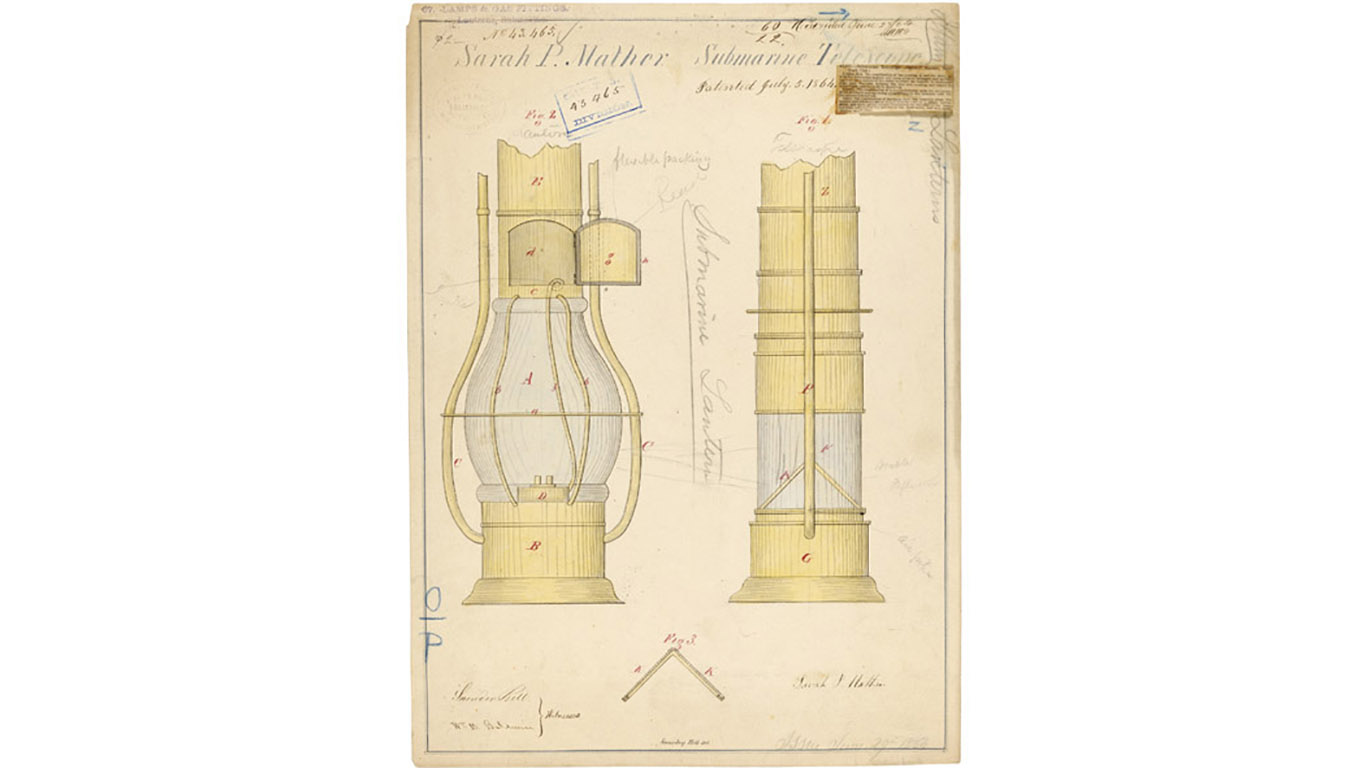
5. Submarine lamp and telescope
> Inventor: Sarah Mather
> Year / period: 1845
Mather’s 1845 patent was for her “submarine telescope,” an apparatus with a lamp that was attached to a tube, which was then sunk under water. It was used not by underwater vessels, but by people above water attempting to see into the depths to investigate wrecks, damaged ship hulls, and enemy activity during the Civil War.

6. Paper-bag-making machine
> Inventor: Margaret Knight
> Year / period: 1871
After having her invention stolen by a man who claimed that there was no way a woman could have invented such a thing, Knight finally received a patent in 1871 for a machine that could produce square-bottomed paper bags.
[in-text-ad]
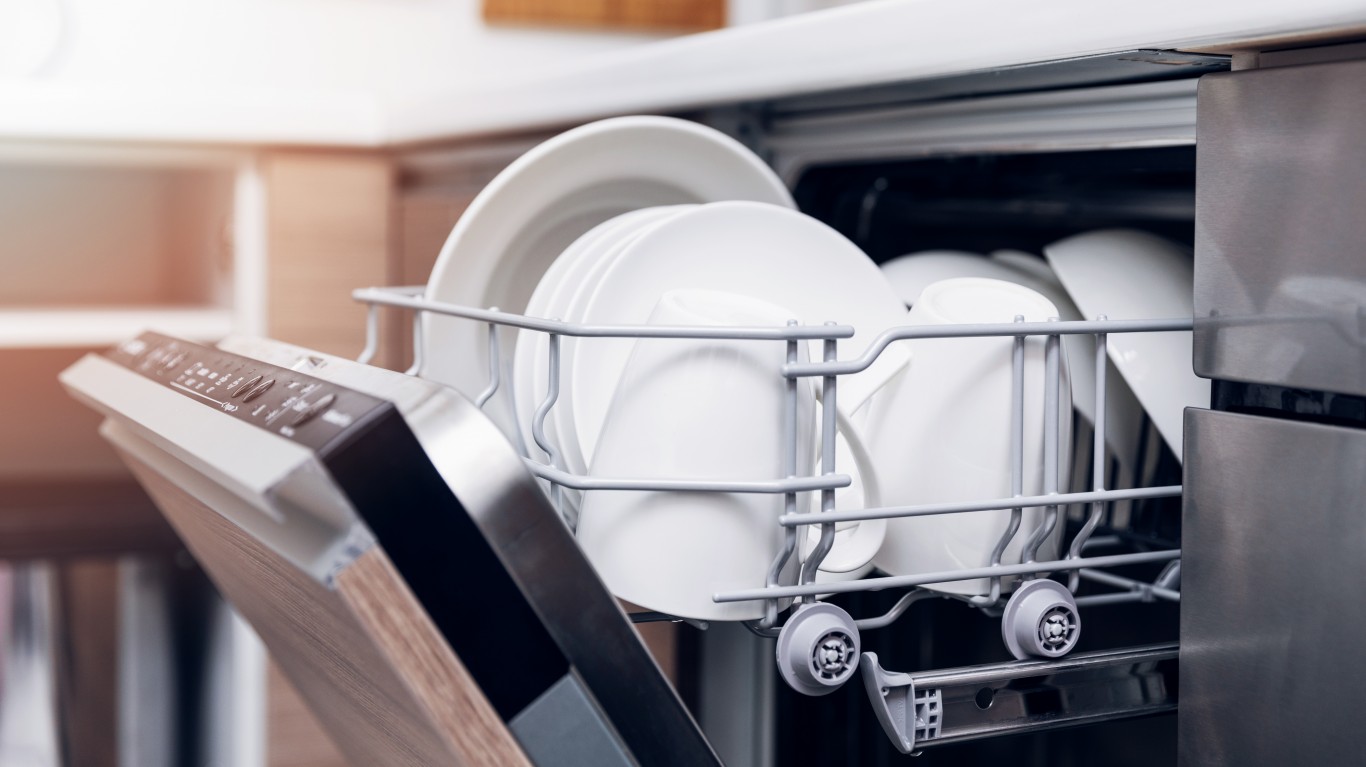
7. Dishwasher
> Inventor: Josephine Cochran
> Year / period: 1872
Though other prototypes existed, it took a woman’s common sense to create a dishwasher that actually cleaned the dishes. Cochran’s design was the first that used water pressure rather than scrubbers to remove debris.

8. Globes
> Inventor: Ellen Fitz
> Year / period: 1875
Fitz was a tutor in Canada when she designed a globe mount that could display the earth’s daily rotation in relation to the path of the sun not only by day and night but also throughout the year.
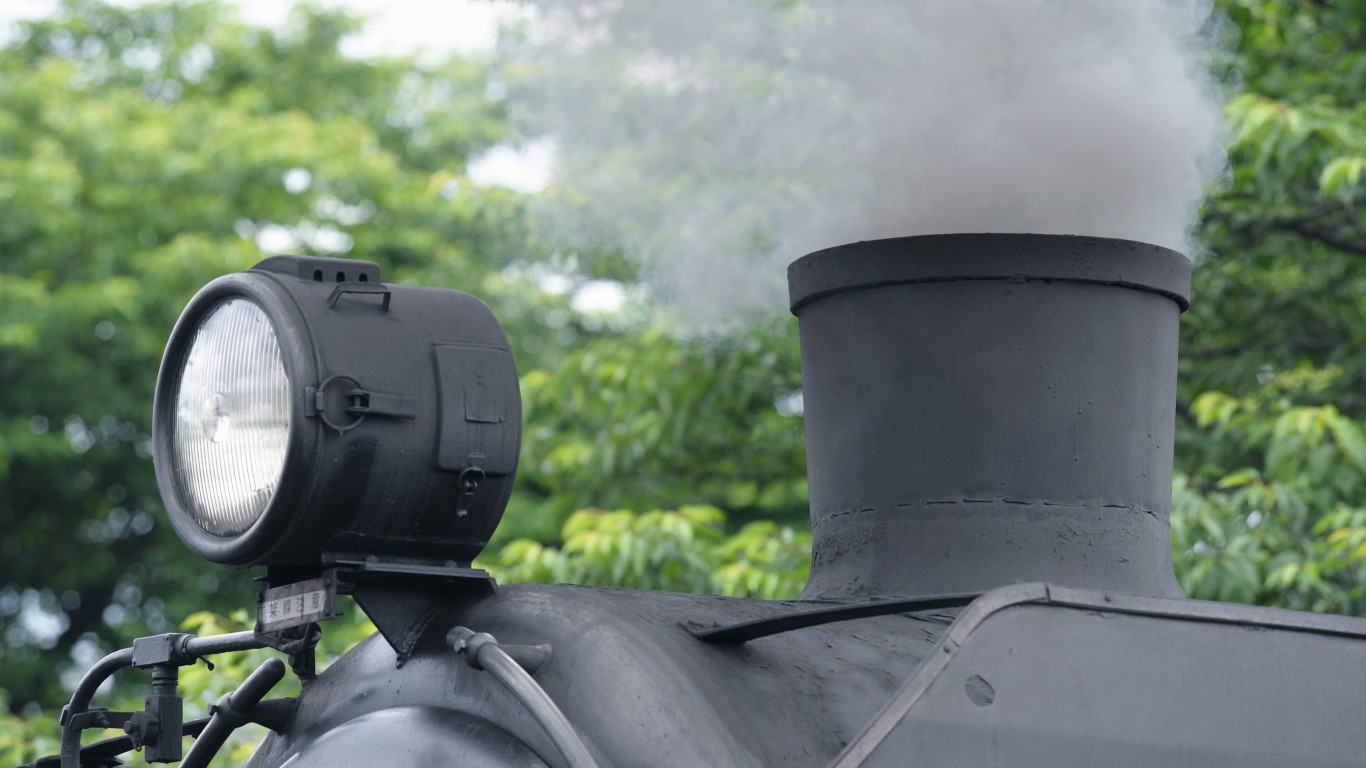
9. Locomotive chimney
> Inventor: Mary Walton
> Year / period: 1879
Passionate about improving urban conditions and air pollution, Walton invented a train chimney system that reduced air pollution by filtering smoke through water, trapping the airborne chemicals and holding them in suspension.
[in-text-ad-2]

10. System to reduce noise by trains
> Inventor: Mary Walton
> Year / period: 1881
In addition to the pollution-minimizing locomotive chimney, Walton also patented a way to greatly reduce the noise of New York City’s elevated railways by insulating the tracks with boxes of sand. The city’s Metropolitan Railroad bought the rights almost immediately.

11. Alphabet blocks
> Inventor: Adeline D. T. Whitney
> Year / period: 1882
Whitney, author of many books for people young and old, patented an early version of alphabet blocks that came in various shapes and sizes and could form letters, numbers, and punctuation symbols.
[in-text-ad]

12. Life raft
> Inventor: Maria Beasley
> Year / period: 1882
Though Beasley had already made a fortune on a barrel-hooping machine patent, this serial inventor went on to design an improved life raft with guard rails that was fireproof and foldable for easy storage. Her life rafts were used on the Titanic and saved over 700 lives.

13. Fire escape
> Inventor: Anna Connelly
> Year / period: 1887
Tenement fires were much more deadly before Connelly invented an external metal staircase, the very first fire escape. In addition to saving lives, her invention also precipitated one of the first New York City building codes, which required residential buildings to have a secondary means of escape for emergencies.
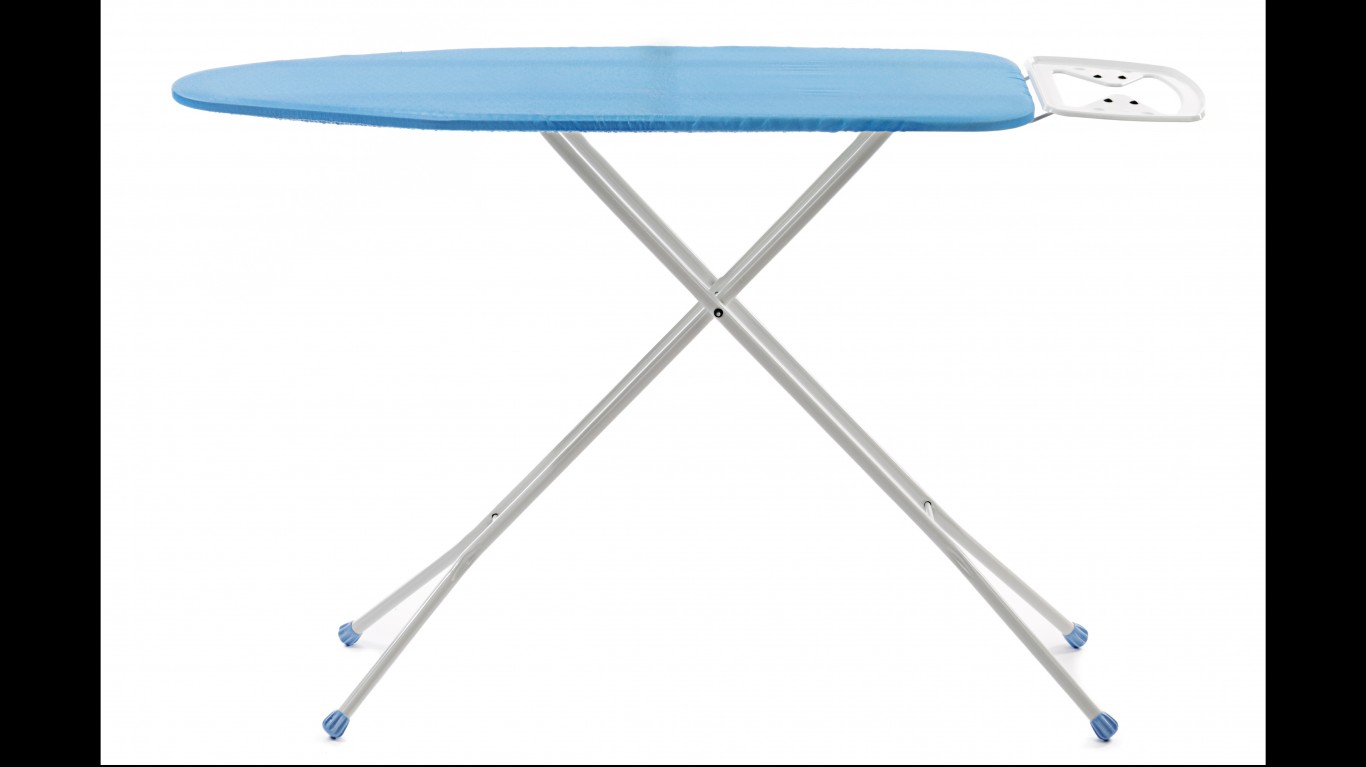
14. Ironing board
> Inventor: Sarah Boone
> Year / period: 1892
Though patents for folding ironing boards appeared in the 1860’s, Boone’s ironing board featured a key difference: It had a narrow, double-sided arm that made it perfect for ironing sleeves without forming creases.
[in-text-ad-2]

15. Car heater
> Inventor: Margaret A. Wilcox
> Year / period: 1893
Taking advantage of the heat already generated as a byproduct of combustion, Wilcox invented a way to heat cars by channeling air over the engine and into the cab.

16. Medical syringe
> Inventor: Letitia Geer
> Year / period: 1899
For centuries before Greer’s invention of a one-handed syringe, medical professionals had been using syringes that required both hands to administer injections.
[in-text-ad]

17. Street sweeper
> Inventor: Florence Parpart
> Year / period: 1900
Parpart’s street sweeper design was not the first, but it was such an improvement on earlier models that within two years of receiving her patent she had contracts all across the United States to manufacture her design.

18. Windshield wiper
> Inventor: Mary Anderson
> Year / period: 1903
After receiving a patent in 1903, Anderson tried to sell her new windshield cleaning device to a manufacturer, who refused, stating that her invention lacked practical value. Her windshield wipers failed to take off before her patent expired and it was 10 years before a similar device became standard on cars.
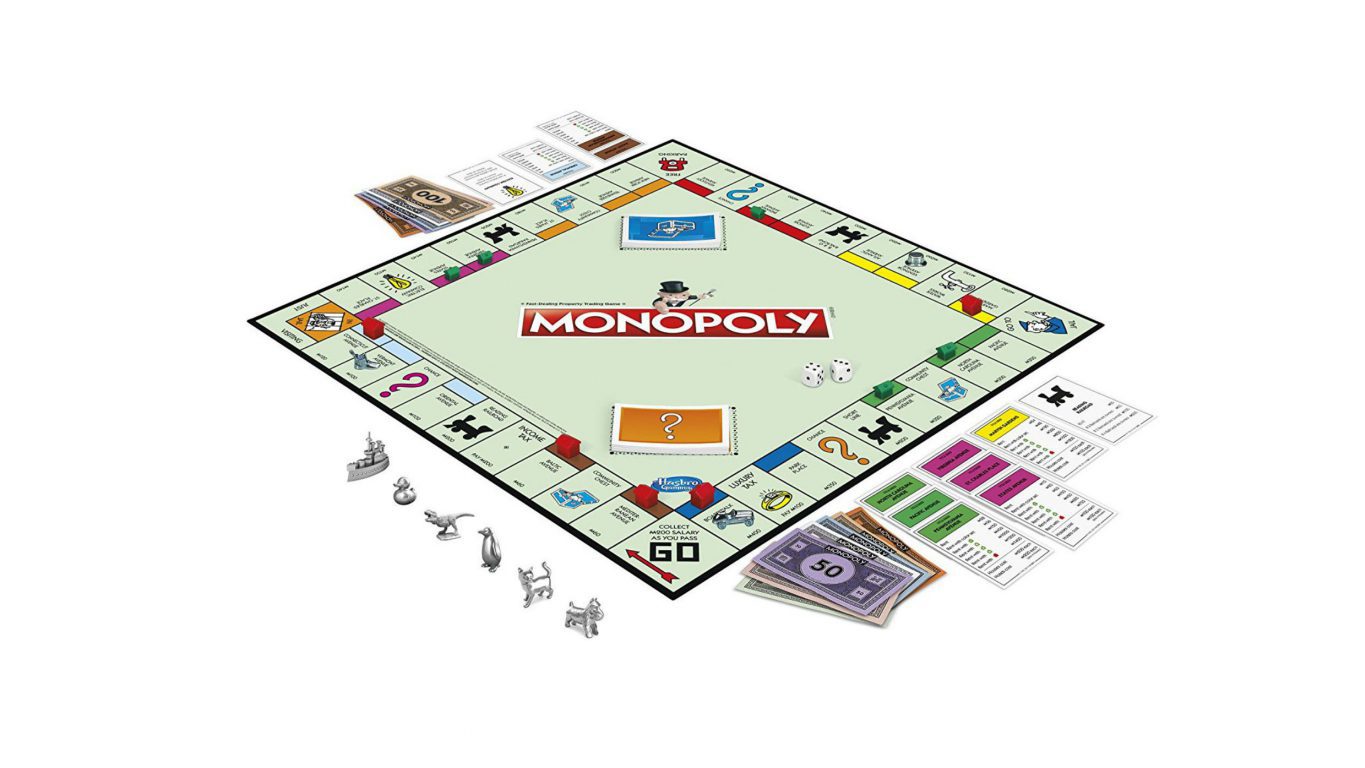
19. The First Monopoly Game
> Inventor: Elizabeth Magie
> Year / period: 1904
Originally designed to demonstrate the evils of unchecked capitalism, Magie’s “The Landlord’s Game,” was patented in 1904, 30 years before a man patented a very similar game called Monopoly and sold it to Parker Brothers.
[in-text-ad-2]
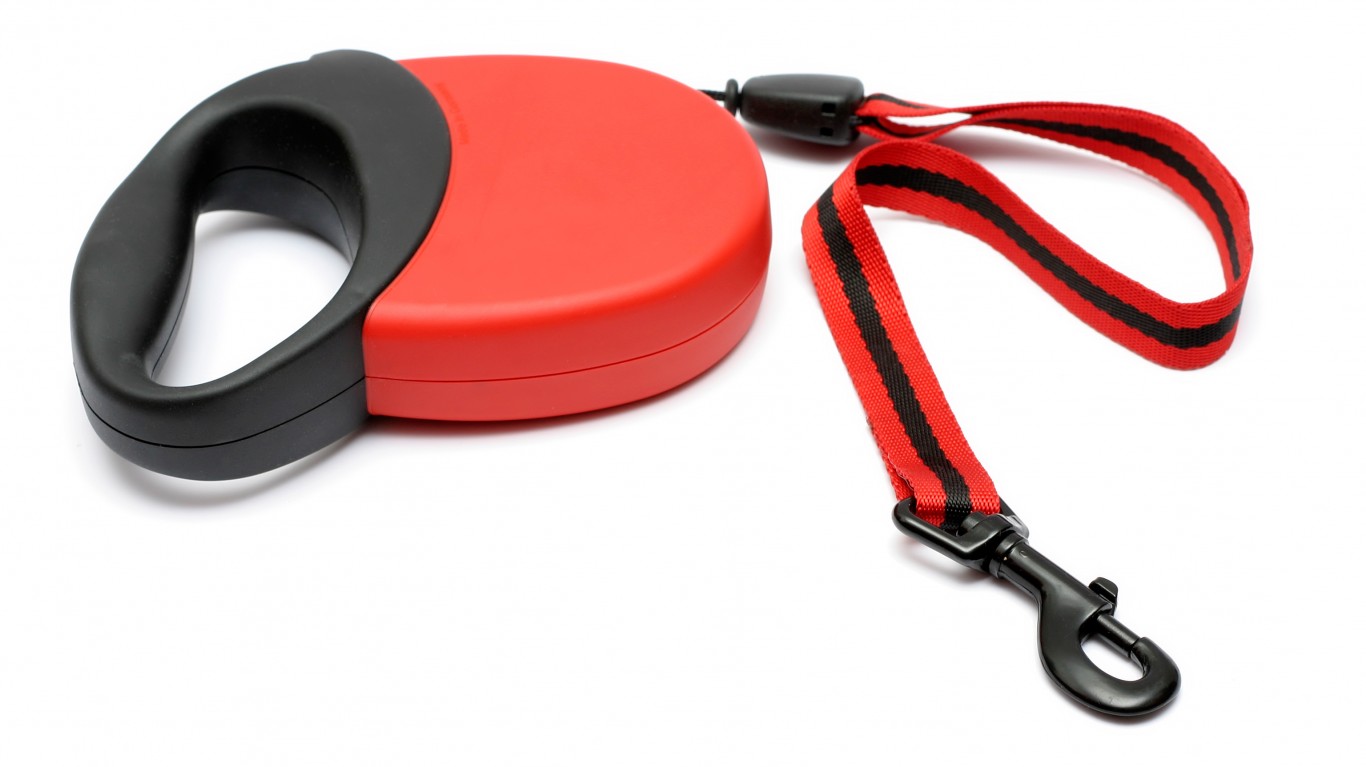
20. Retractable dog leash
> Inventor: Mary A. Delaney
> Year / period: 1908
In Delaney’s words, her invention of a leash you could shorten at a moment’s notice was to prevent dogs from “running on the wrong side of lamp posts or pedestrians, thus causing much annoyance to the owner.” Thank you, Mary.
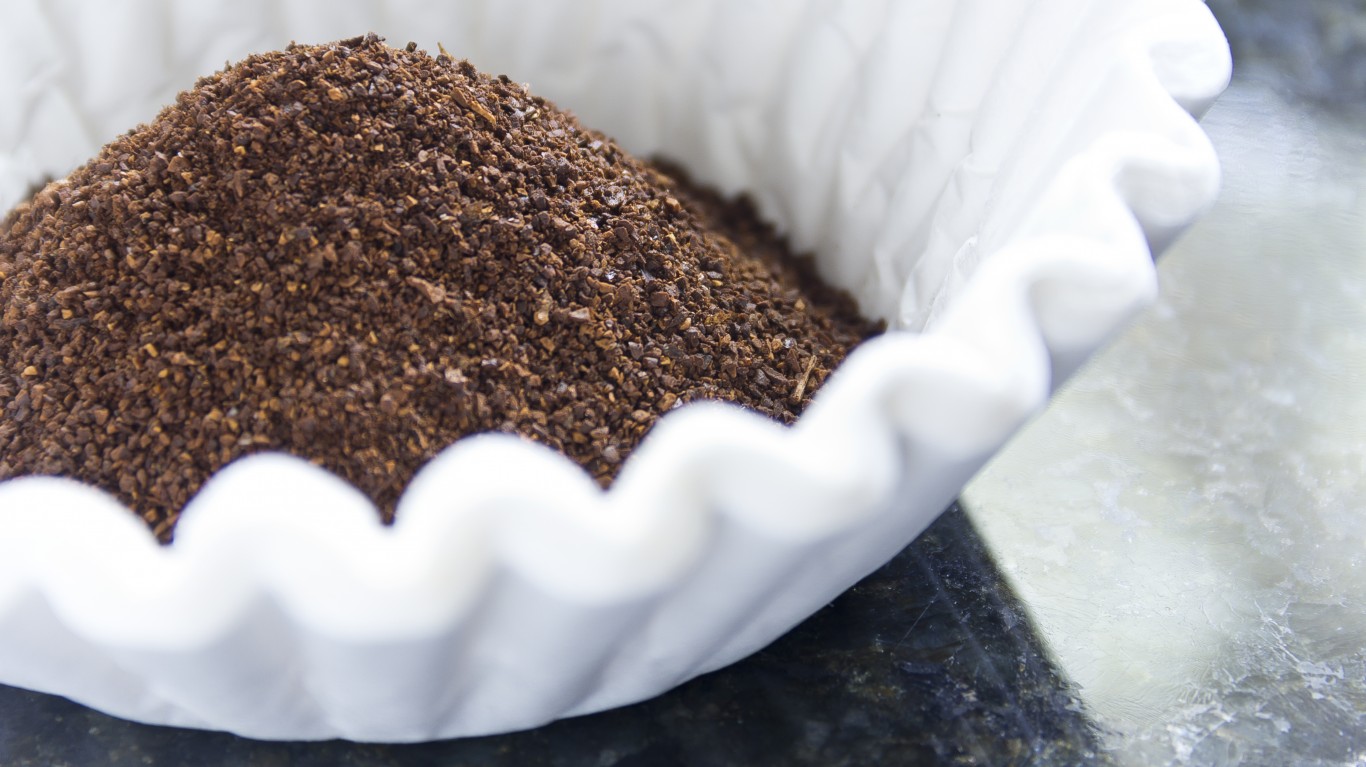
21. Coffee filter
> Inventor: Melitta Benz
> Year / period: 1908
Pour-over coffee fans may be surprised to learn that the company Melitta isn’t named after an Italian coffee maker. It’s actually named after Melitta Bentz, a German entrepreneur who invented an easy, minimalist way to make coffee by placing it in a filter and pouring water over it.
[in-text-ad]

22. Electric refrigerator
> Inventor: Florence Parpart
> Year / period: 1914
In a time when people were still using ice-boxes, Parpart patented an electric refrigerator that she successfully marketed and improved upon for years.

23. Electric hot water heater
> Inventor: Ida Forbes
> Year / period: 1917
Not much is known about Ida Forbes besides that she patented the first electric hot water heater in a time when most hot water heaters ran on gas.

24. Airplane muffler
> Inventor: El Dorado Jones
> Year / period: 1917
Nicknamed “Iron Woman,” El Dorado Jones owned her own metalworking factory where she employed only women over 40. Though she never received the funding to manufacture it, she invented the airplane engine muffler.
[in-text-ad-2]
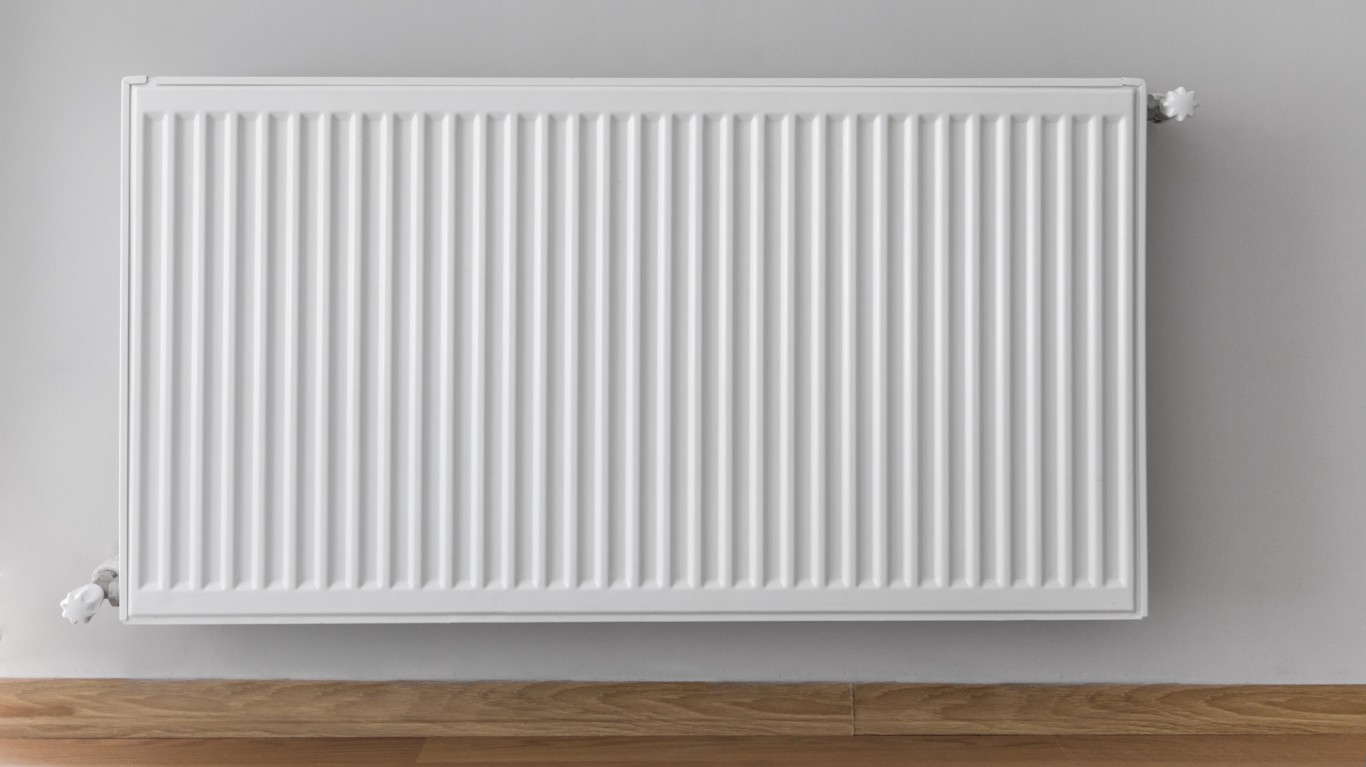
25. Central heating
> Inventor: Alice Parker
> Year / period: 1919
Parker’s revolutionary design for central heating, though never utilized, was the first that used natural gas, rather than wood, to heat a home.

26. Foot pedal trash can
> Inventor: Lillian Gilbreth
> Year / period: N/A
Gilbreth, an engineer and psychologist, performed exhaustive research on the psychological impact that work spaces have on productivity. Her genius in the area of ergonomics brought us many valuable inventions, including the foot pedal trash can.
[in-text-ad]
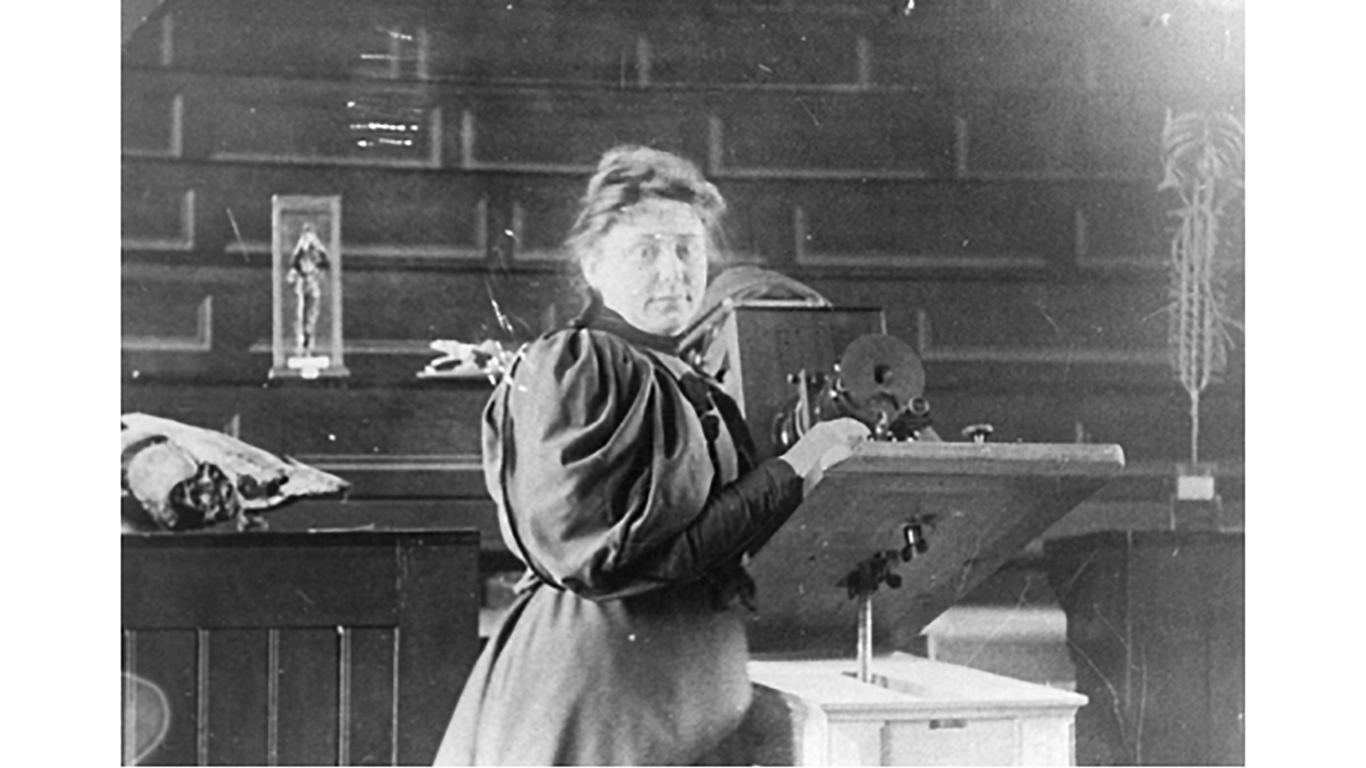
27. Microelectrode
> Inventor: Ida Hyde
> Year / period: 1921
The first female researcher at Harvard Medical School, Hyde created one of the earliest models of an intracellular micropipette electrode, which allowed her to stimulate and monitor a cell without disturbing the cell wall. This technology is still widely used in science laboratories.
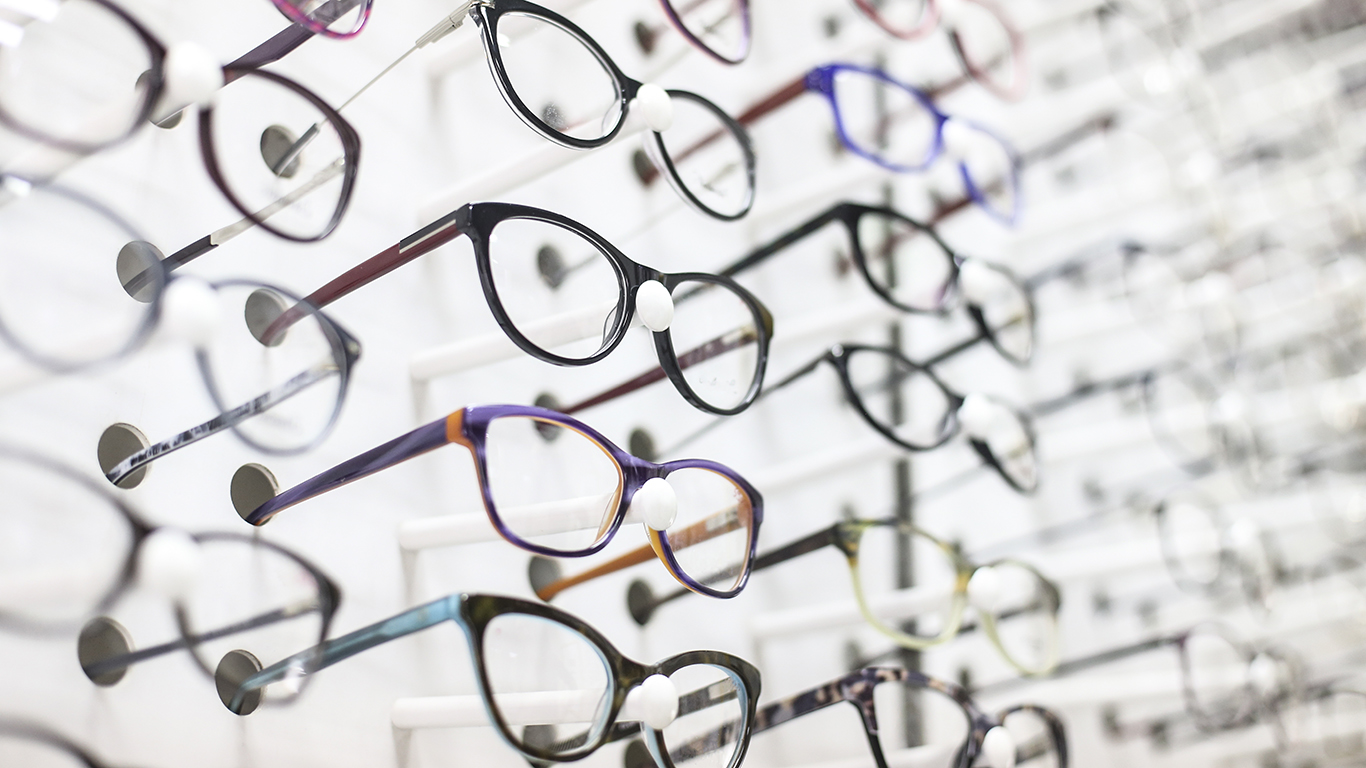
28. Low-reflection glass
> Inventor: Katharine Blodgett
> Year / period: 1935
Before Blodgett’s revolutionary non-reflective glass coating was invented, glass wasn’t nearly as useful or reliable as it is today. Her invention has proven indispensable in the making of camera lenses, microscopes and eyeglasses.

29. Wireless transmission technology
> Inventor: Hedy Lamarr
> Year / period: 1941
During World War II, Lamarr, who also happened to be a movie star, created a frequency-hopping communication system that could guide torpedos without being detected. Her groundbreaking work paved the way for the modern invention of WiFi, GPS, and bluetooth.
[in-text-ad-2]
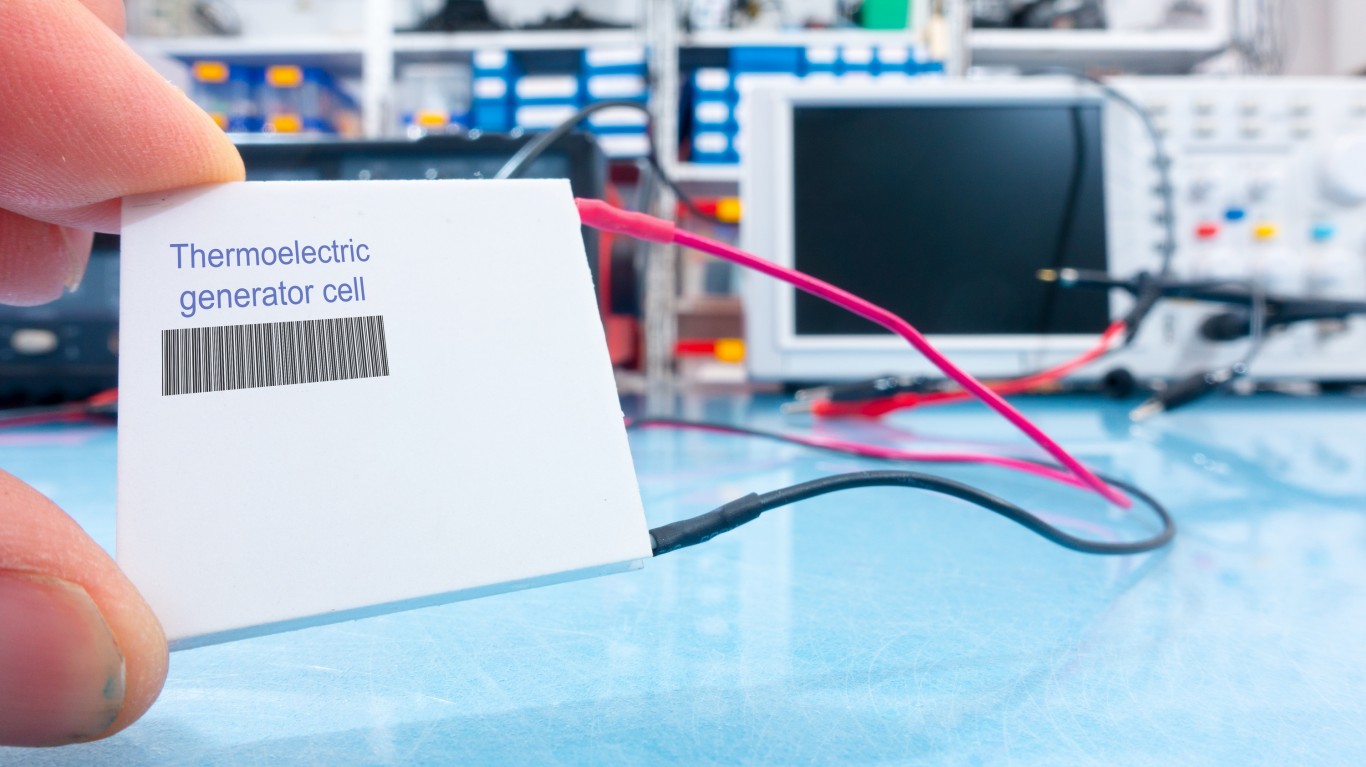
30. Thermoelectric power generator
> Inventor: Maria Telkes
> Year / period: 1947
A pioneer in the field of solar thermal storage systems, MIT researcher Maria Telkes created the first solar-heated system for her home in Dover, Massachusetts.

31. Disposable diaper
> Inventor: Marion Donovan
> Year / period: 1950
First inventing a leak-proof diaper covering, then a fully disposable diaper, Donovan was intent on helping as many people as possible with her ingenuity. While it’s not surprising that her inventions were completely ignored as “unnecessary and impractical” by the male manufacturers she pitched them to, Donovan took matters into her own hands and sold them straight to Saks Fifth Avenue.
[in-text-ad]
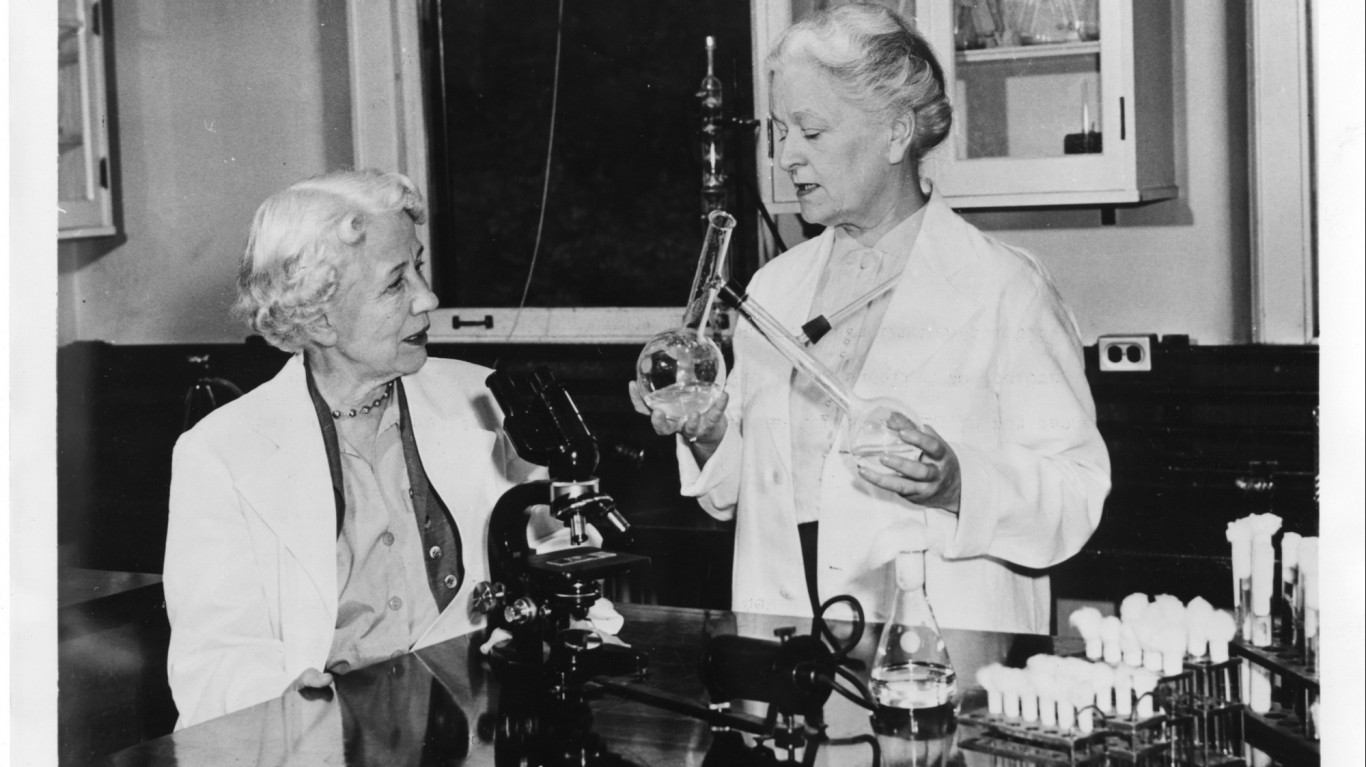
32. Anti-fungal drug
> Inventor: Rachel Fuller Brown and Elizabeth Lee Hazen
> Year / period: 1950
These two New York Department of Health lab researchers discovered Nystatin, one of the first effective anti-fungal medicines, by collaborating on experiments through the mail.

33. Liquid Paper
> Inventor: Bette Nesmith Graham
> Year / period: 1951
This invention turned Graham from a secretary to a millionaire. First marketed as “Mistake-Out,” Graham’s home-made typewriter correction fluid was an instant hit among her fellow secretaries. After further experimentation, she perfected her recipe and Liquid Paper was born.

34. Computer software
> Inventor: Grace Murray Hopper
> Year / period: 1952
A computer scientist who helped design Harvard’s Mark I Computer, Hopper also invented a compiler that could translate written language into computer code, and was a part of the team that developed COBOL, one of the first modern computer programming languages.
[in-text-ad-2]

35.Waterproof leather protector
> Inventor: Patsy O’Connell Sherman
> Year / period: 1956
While attempting to develop a new kind of rubber for jet fuel lines, Sherman and her lab partner Sam Smith accidentally discovered a waterproof, stain proof, insoluble polymer that eventually became Scotchgard.
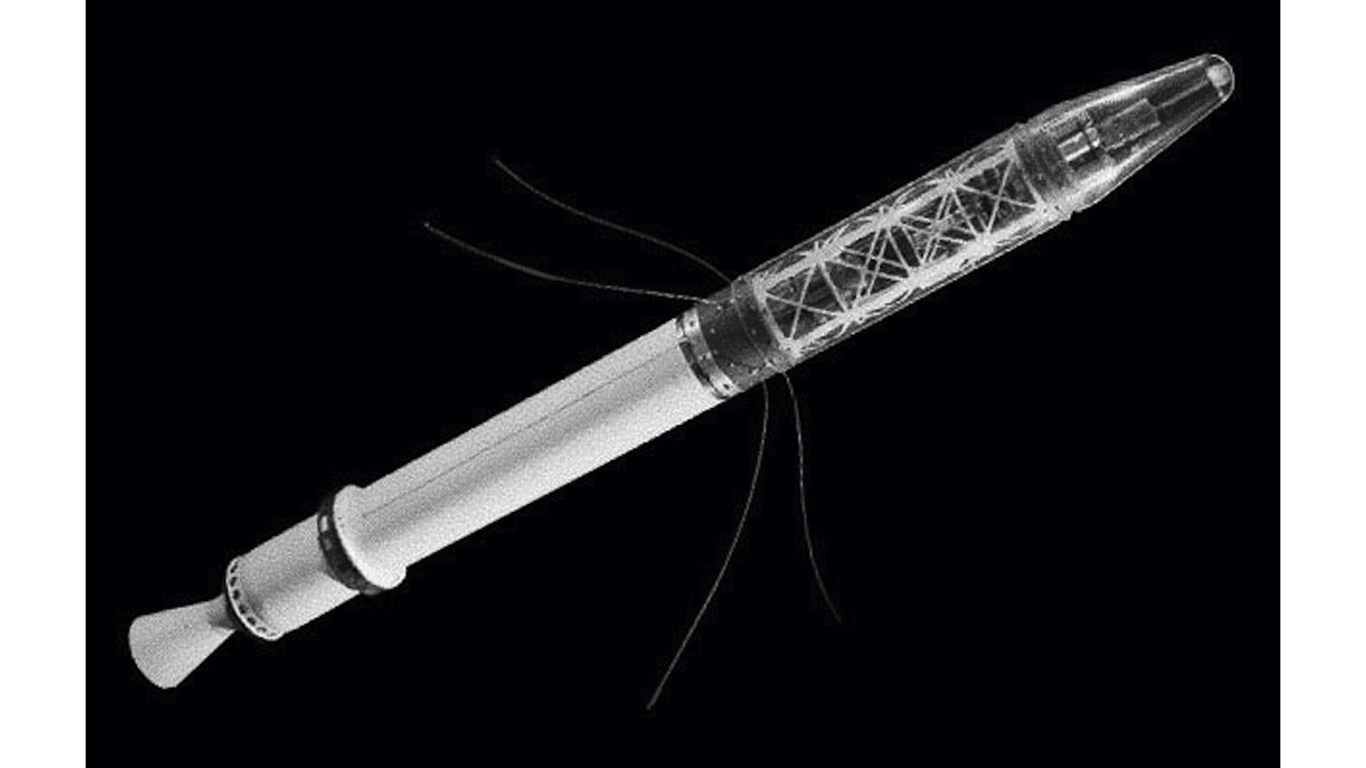
36. Hydyne rocket fuel
> Inventor: Mary Sherman Morgan
> Year / period: 1957
Explorer I, the first satellite ever launched into orbit by the United States, owed its success to Hydyne, the improved rocket fuel that Morgan created during her time as technical lead at North American Aviation’s Rocketdyne Division.
[in-text-ad]

37. Immunosuppressive drug
> Inventor: Gertrude Belle Elion
> Year / period: 1957
During her long career as a pharmacologist, Elion helped develop countless drugs that are used in the treatment of AIDS, malaria, herpes, and cancer. Along with George Herbert Hitchings, she invented the first immunosuppressive drug, Azathioprine, which was initially used for chemotherapy patients, and eventually for organ transplants.
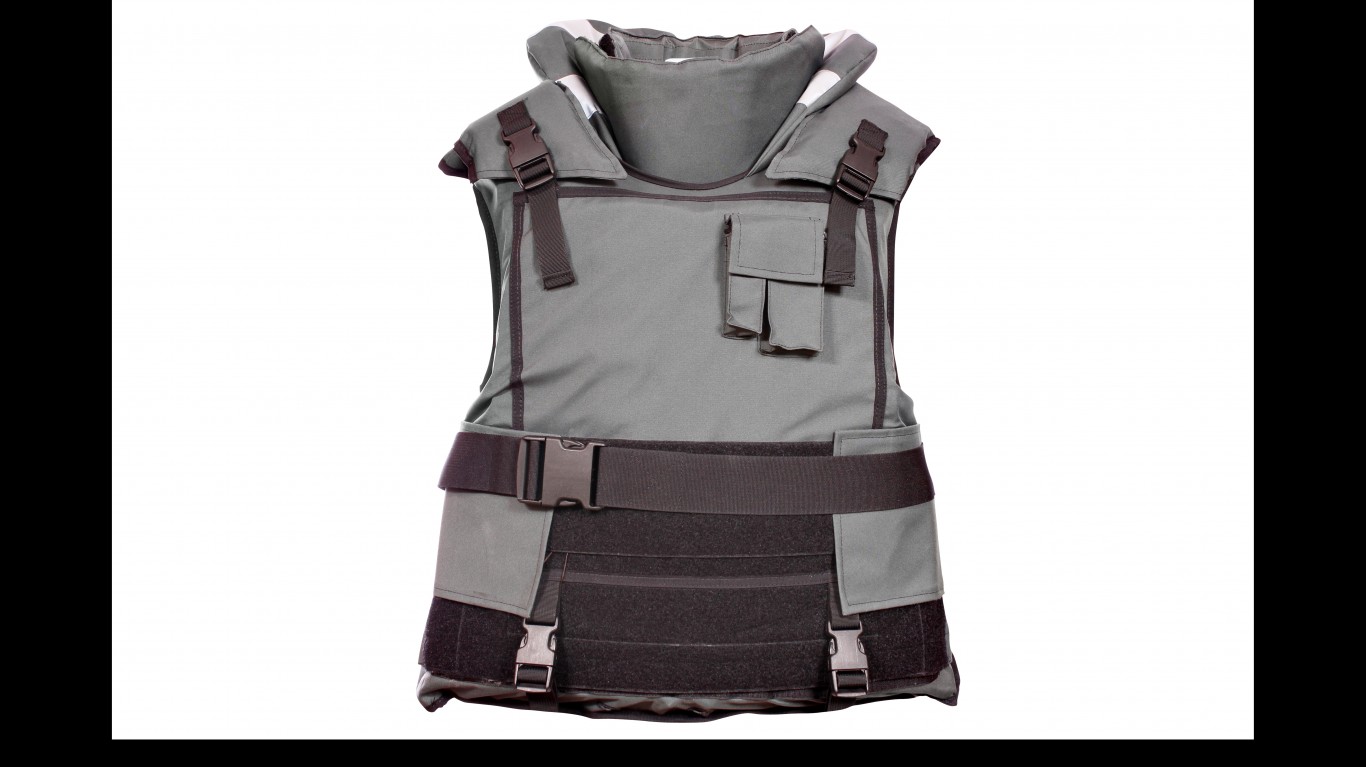
38. Bullet-proof fiber
> Inventor: Stephanie Kwolek
> Year / period: 1966
While searching for strong but lightweight plastics to use in car tires, DuPont researcher Stephanie Kwolek discovered what would become known as Kevlar. This revolutionary fiber has saved countless lives in the form of bullet-proof vests, and is also used in numerous applications, such as bridge cables, canoes, and frying pans.

39. Space rocket propulsion system
> Inventor: Yvonne Brill
> Year / period: 1974
Brill’s groundbreaking invention, the hydrazine resistojet, streamlined various rocket propulsion systems, which all required different types of fuel and added prohibitive weight, into a lighter system with a single fuel source. Monopropellant thrusters are now standard, and are why we have self-propelling satellites.
[in-text-ad-2]

40. Call-center system
> Inventor: Erna Schneider Hoover
> Year / period: 1967
Before Hoover’s invention of a telephone call traffic system, phone circuit equipment at Bell Labs — where she was a researcher — was constantly overloaded. Her computerized solution monitored call volumes and adjusted acceptance rates accordingly, so as not to overload circuits.

41. Home security system
> Inventor: Marie Van Brittan Brown
> Year / period: 1969
With New York City police being notoriously slow to respond to calls in her neighborhood, Brown took matters into her own hands and created a home security system with closed-circuit television.
[in-text-ad]
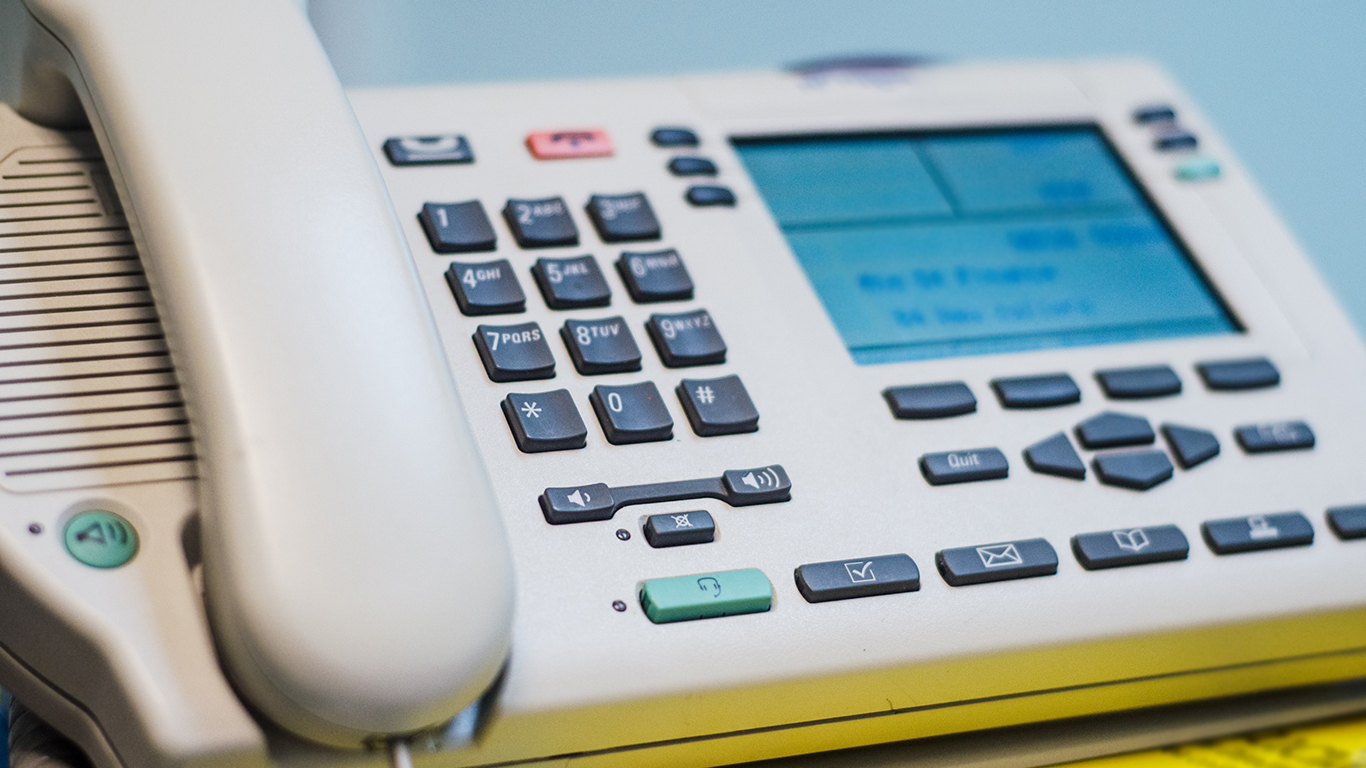
42. Caller ID and call-waiting
> Inventor: Shirley Ann Jackson
> Year / period: 1970’s
Shirley Ann Jackson was an award-winning theoretical physicist. Her contributions to the field of telecommunications led to the invention of numerous technologies, including caller ID and call-waiting, as well as solar cells and fiber optic cables.
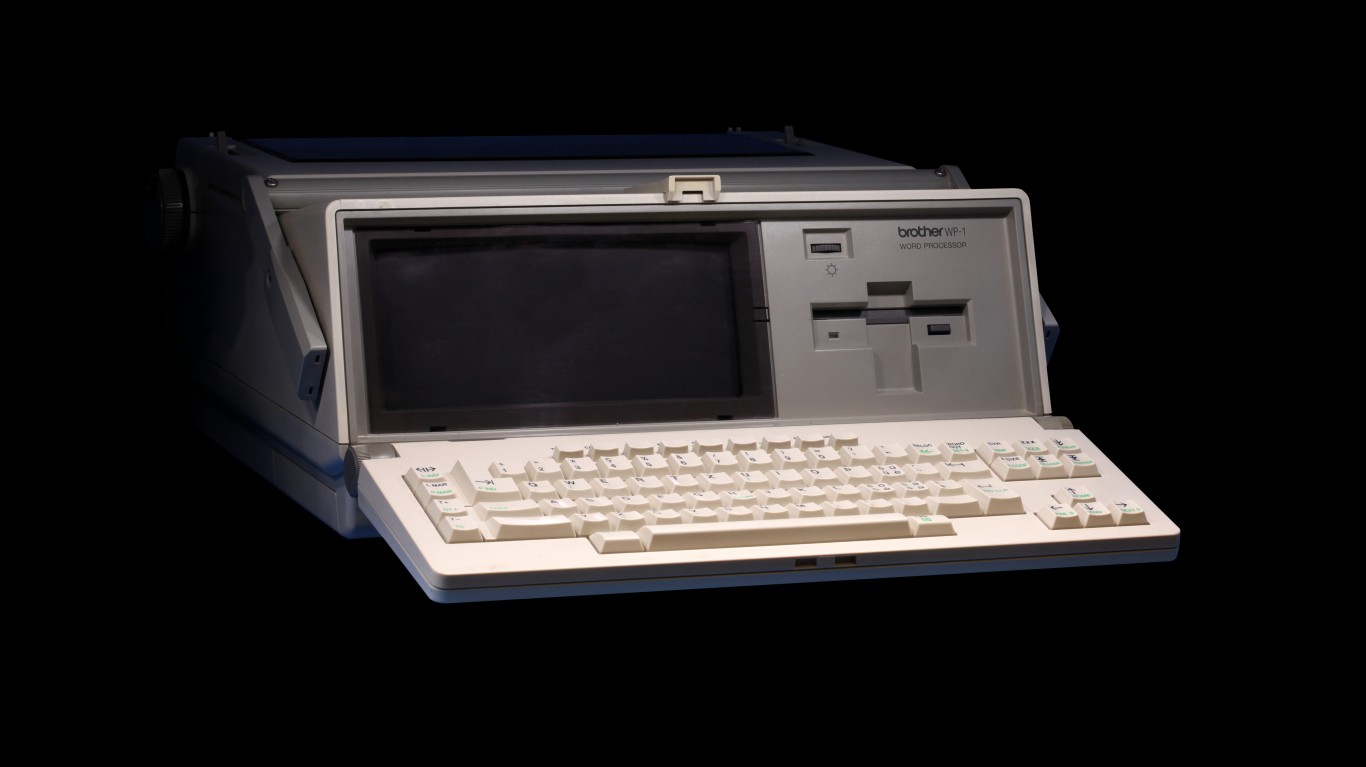
43. Word processor
> Inventor: Evelyn Berezin
> Year / period: 1971
In addition to creating the first computerized airline booking system, Berezin created the world’s first word processor. Realizing that because of her gender she wouldn’t be able to move up in the industry, she also founded her own company, Redactron, to get her inventions on the market.

44. Photo enhancement
> Inventor: Barbara Askins
> Year / period: 1978
While working for NASA, Askins was tasked with finding a way to improve the quality of photos taken from space. Her method of enhancing photo negatives was far more widely applicable, as it could be used to clarify photos after they were already developed. Her technology has been adapted for use with X-rays and historical photo restoration.
[in-text-ad-2]

45. Space station batteries
> Inventor: Olga Gonzalez-Sanabria
> Year / period: 1980
The International Space Station relies on solar power, but for a third of its rotation, the earth blocks the sun’s rays. Gonzalez-Sanabria’s long-life nickel hydrogen batteries keep the International Space Station powered up during that dark portion of its rotation.

46. Blissymbol printer
> Inventor: Rachel Zimmerman
> Year / period: 1984
At only 12 years old, Zimmerman invented software that allows people with speech disabilities to communicate non-verbally by using symbols on a touchpad that are then translated to written language.
[in-text-ad]

47. Laser cataract surgery
> Inventor: Patricia Bath
> Year / period: 1986
Bath’s patented Laserphaco Probe allows doctors to dissolve cataracts quickly and painlessly before applying new lenses to patients’ eyes. This technology is used worldwide to prevent blindness due to cataracts.
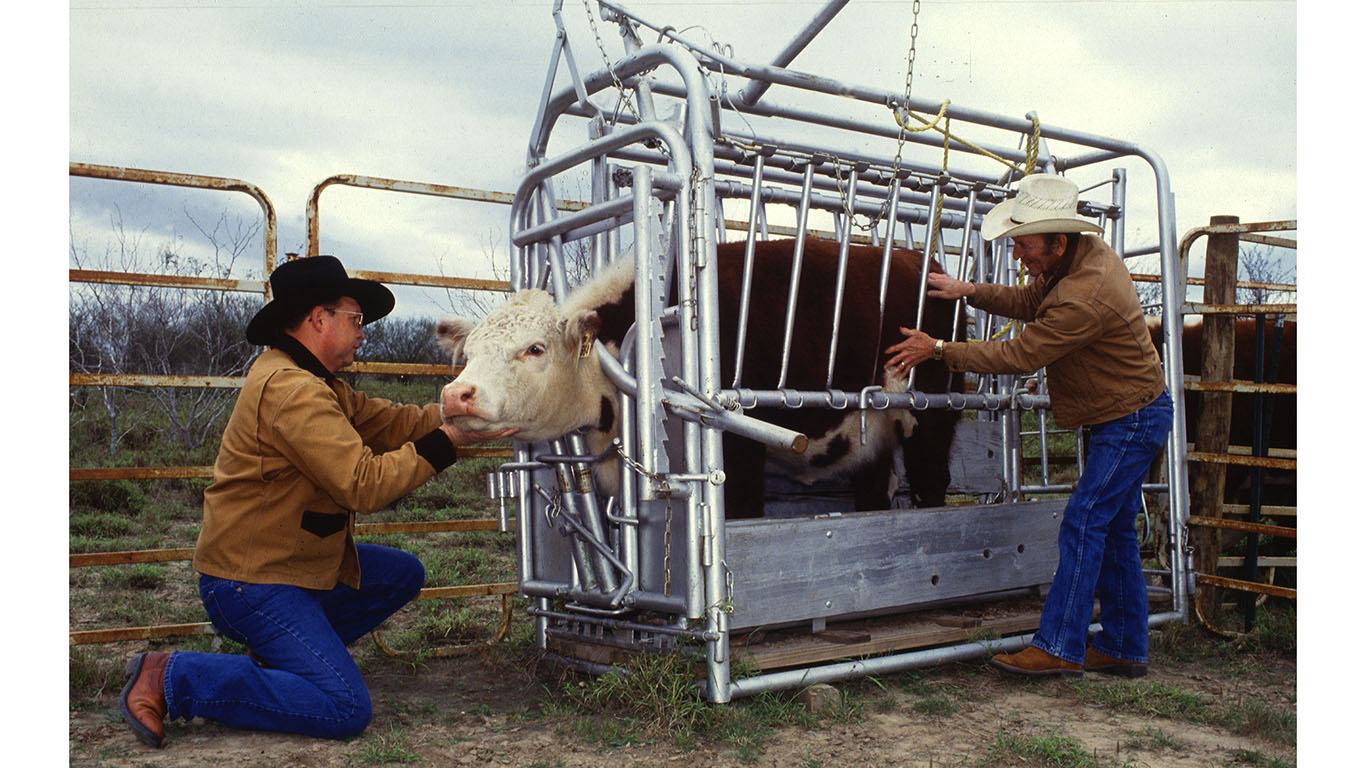
48.Humane cattle restraints
> Inventor: Temple Grandin
> Year / period: 1990
Grandin’s innovative designs in the field of animal husbandry have led to calmer livestock and fewer injuries. She has developed numerous ways to handle cattle based on how they naturally behave, rather than on brute force. Her center track cattle restraint system is now used to manage about half of the cattle in the United States.

49. Stem cell isolation
> Inventor: Ann Tsukamoto
> Year / period: 1991
A vital breakthrough in cancer research, Tsukamoto’s co-patented process of isolating human stem cells found in bone marrow has saved hundreds of thousands of lives.
[in-text-ad-2]

50. Naturally colored cotton
> Inventor: Sally Fox
> Year / period: 1997
Before Fox’s innovative plant-breeding work, naturally colored cottons were rare, temperamental, and could only be picked and spun by hand. Her work has led to cottons that grow in an array of colors and that can be machine-harvested and spun. This allows for a drastic reduction in chemical and bleach processing, and the need for synthetic dyes.
The Average American Is Losing Momentum on Their Savings Every Day (Sponsor)
If you’re like many Americans and keep your money ‘safe’ in a checking or savings account, think again. The average yield on a savings account is a paltry .4%* today. Checking accounts are even worse.
But there is good news. To win qualified customers, some accounts are paying nearly 10x the national average! That’s an incredible way to keep your money safe and earn more at the same time. Our top pick for high yield savings accounts includes other benefits as well. You can earn up to 3.80% with a Checking & Savings Account today Sign up and get up to $300 with direct deposit. No account fees. FDIC Insured.
Click here to see how much more you could be earning on your savings today. It takes just a few minutes to open an account to make your money work for you.
Thank you for reading! Have some feedback for us?
Contact the 24/7 Wall St. editorial team.
 24/7 Wall St.
24/7 Wall St. 24/7 Wall St.
24/7 Wall St.